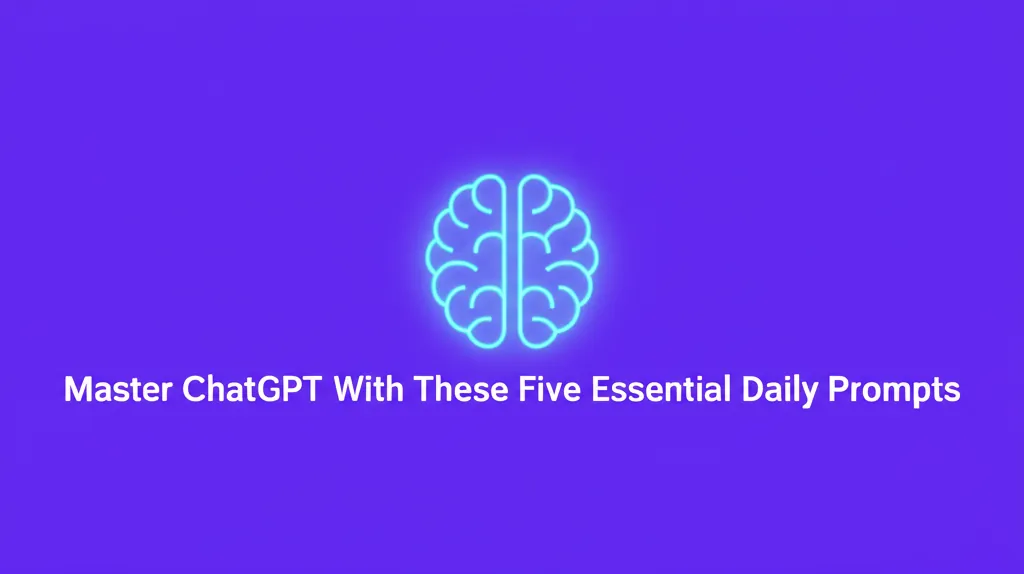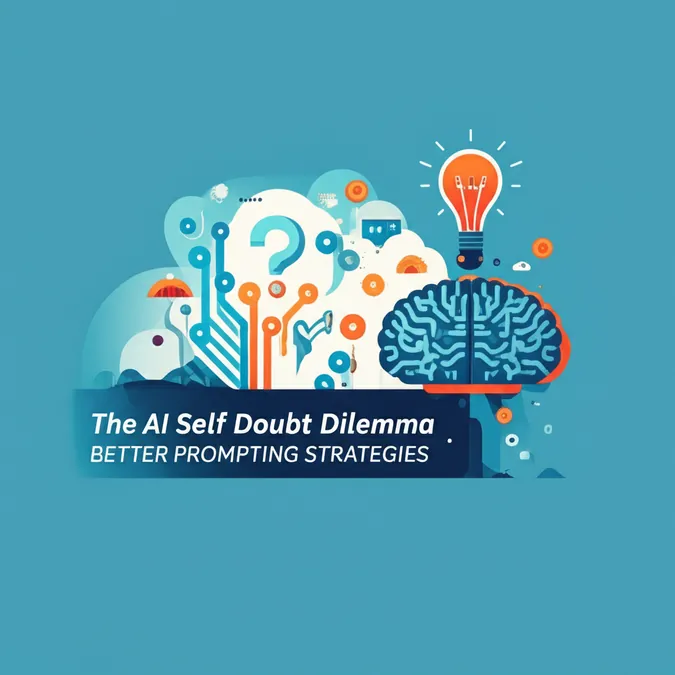Developer Offer
Try ImaginePro API with 50 Free Credits
Build and ship AI-powered visuals with Midjourney, Flux, and more — free credits refresh every month.
AI Is The New Crypto Chart For Traders
In the fast-paced world of cryptocurrency, traders have traditionally relied on technical charts like candlesticks, Fibonacci lines, and Bollinger Bands to decode price movements. However, a significant shift is happening. Instead of deciphering complex graphs, traders are now turning to AI models like ChatGPT and Grok for instant context, sentiment analysis, and narrative insights. These tools aren't replacing charts, but they are becoming the essential first step in the decision-making process for many traders.
The Shift Away from Chart Fatigue
Crypto charts are packed with data, but this doesn't always lead to clear insights. For many, especially newer traders, charts can be an overwhelming wall of conflicting indicators and visual noise. Effective chart reading demands technical skill, emotional discipline, and sharp pattern recognition.
This is where conversational AI offers a more intuitive alternative. Rather than analyzing indicators, traders can ask simple, direct questions like, “Is this a good time to buy Solana (SOL)?” AI tools provide a faster path to understanding the market.
For example, a prompt like “Summarize current sentiment on XRP using X discourse” given to Grok yields a balanced summary of the community's cautiously bullish outlook, highlighting regulatory hopes and lingering skepticism.
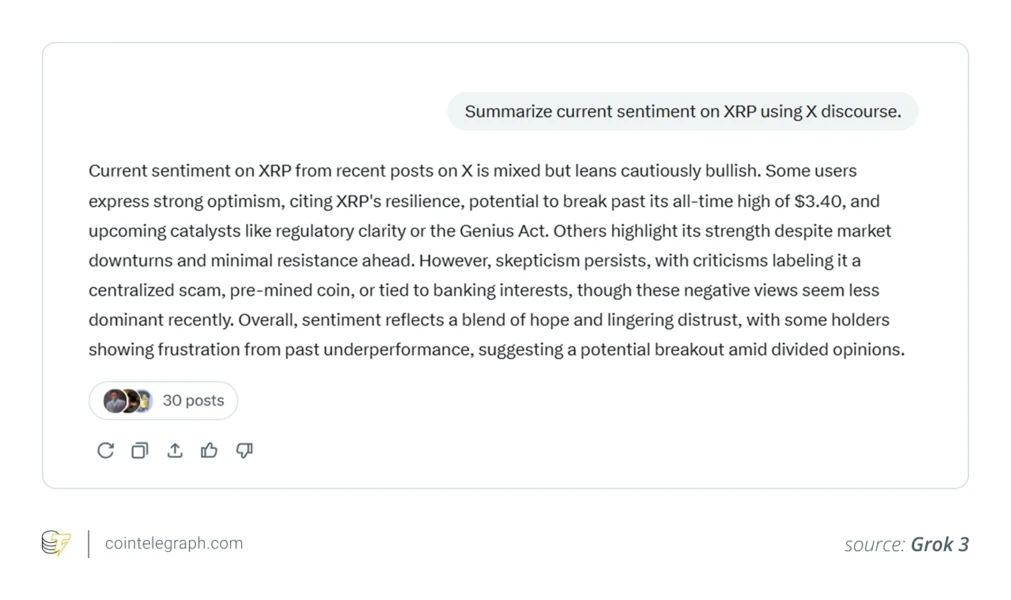
Similarly, asking ChatGPT, “If Bitcoin closes above its 200-day moving average, what tends to follow?” provides a responsible overview of the historical implications, including increased buying interest and the risk of false breakouts.
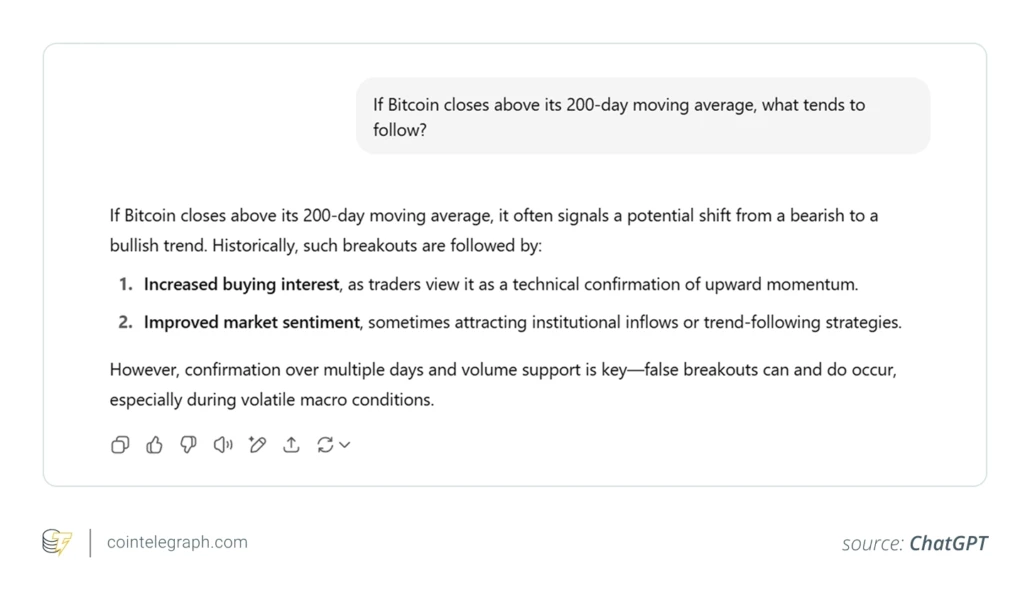
A prompt to Grok comparing blockchains—“Compare Solana and Avalanche in terms of user activity this month”—delivers a clear, data-backed comparison highlighting Solana’s dominance in user activity while noting Avalanche's developer growth.
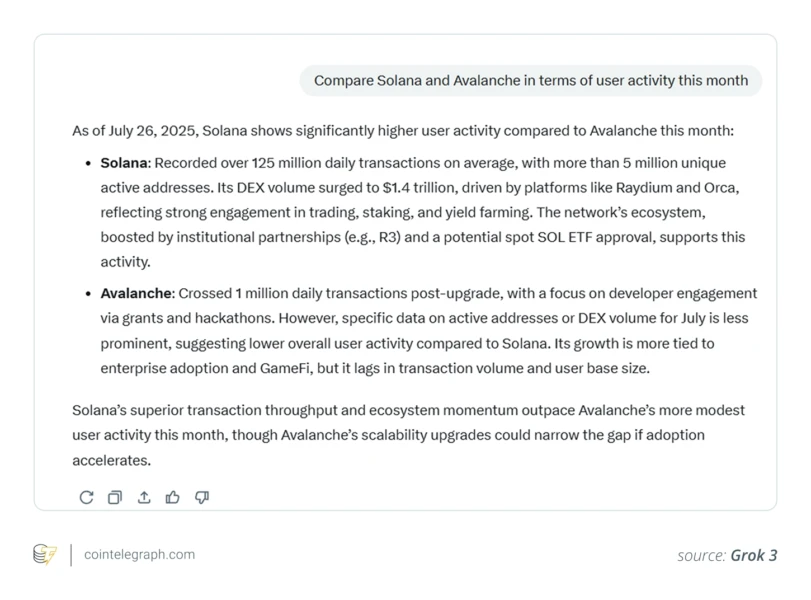
ChatGPT vs Grok A Head to Head Comparison
When it comes to being “trader-friendly,” ChatGPT and Grok have distinct strengths. ChatGPT excels at explaining technical indicators, comparing fundamentals, and simulating trading scenarios. Grok, with its deep integration into X, is unparalleled for capturing real-time sentiment, fast-moving narratives, and meme-aware cultural signals.
To see how they differ, both models were given the same prompts.
Prompt 1: Give me two reasons to invest in Ethereum (ETH) in August 2025.
- ChatGPT's Output: Focused on broader, accessible concepts like ETF momentum and ecosystem growth, making it ideal for newer investors. It provided a big-picture view but lacked specific data.
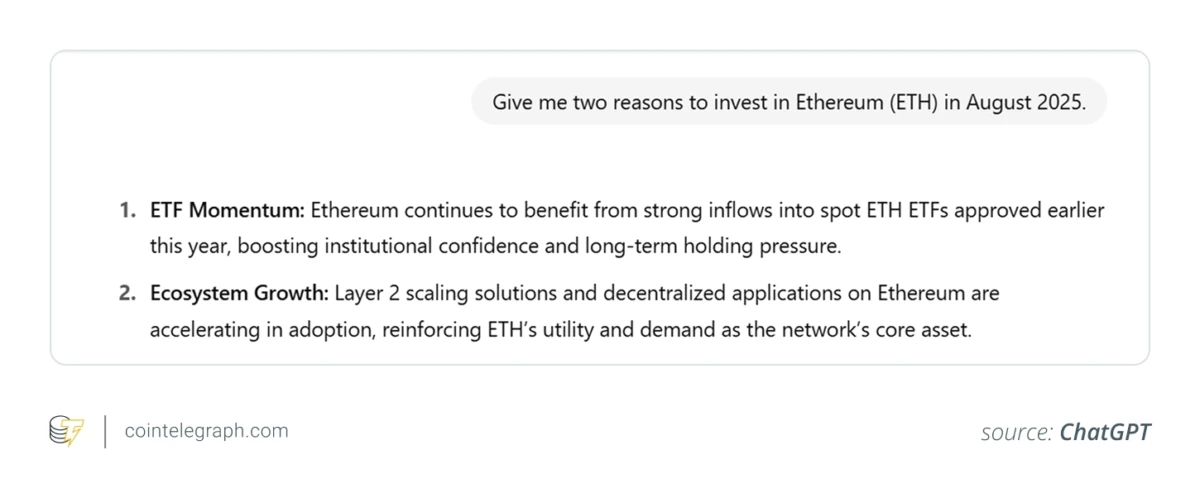
- Grok's Output: Offered a more data-driven response, citing specific ETF inflow figures and upcoming technical upgrades like Pectra. This detailed justification is better suited for technically-minded investors.
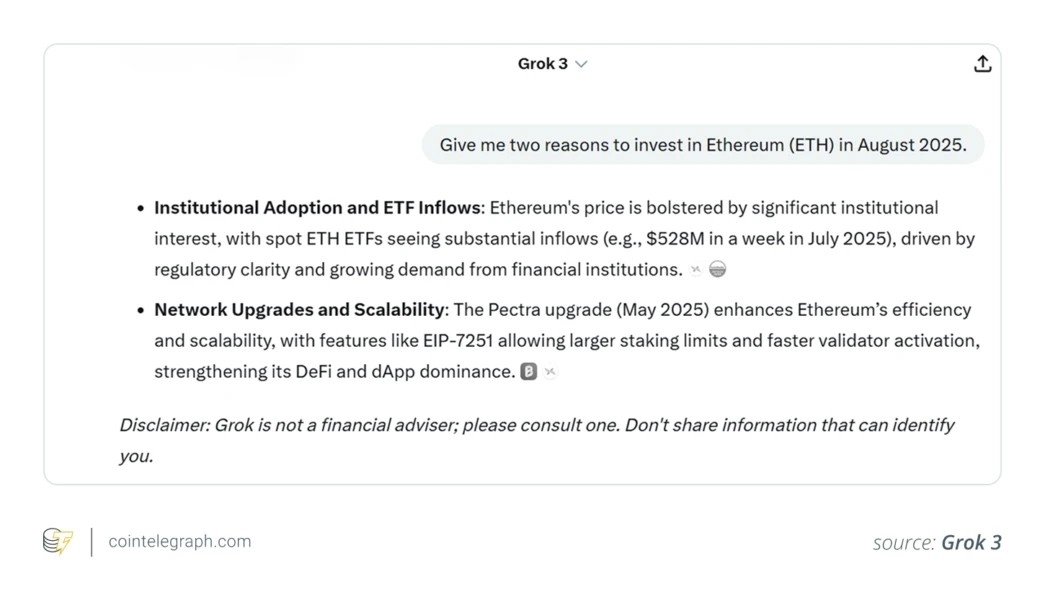
Prompt 2: Analyze this intraday price chart of BTCUSD from July 26, 2025...
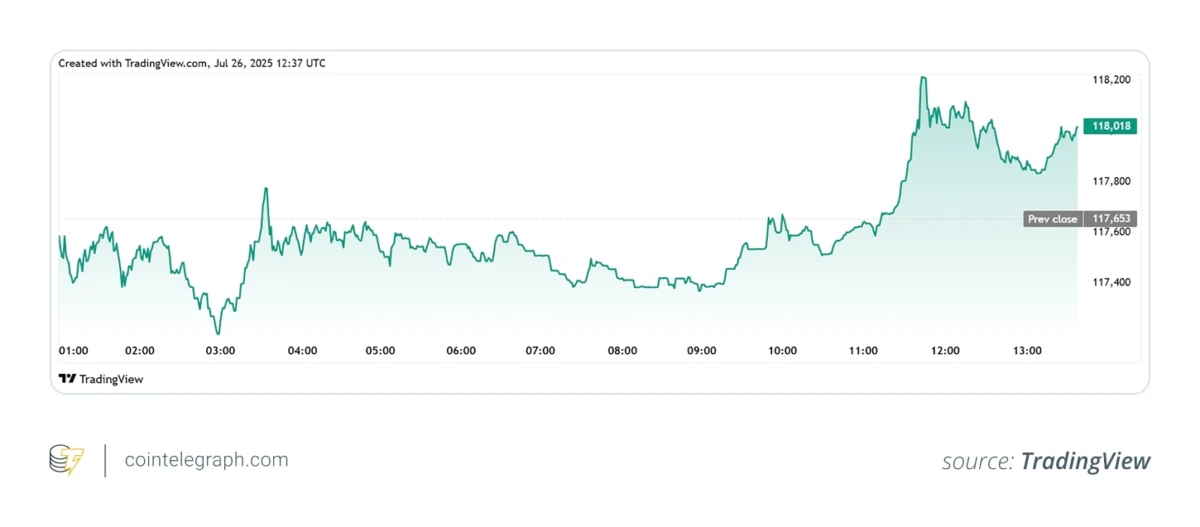
- ChatGPT's Output: Provided a fluid, narrative-based analysis, identifying a trend shift and suggesting potential causes. Its outlook was cautiously bullish but less precise on technical levels.
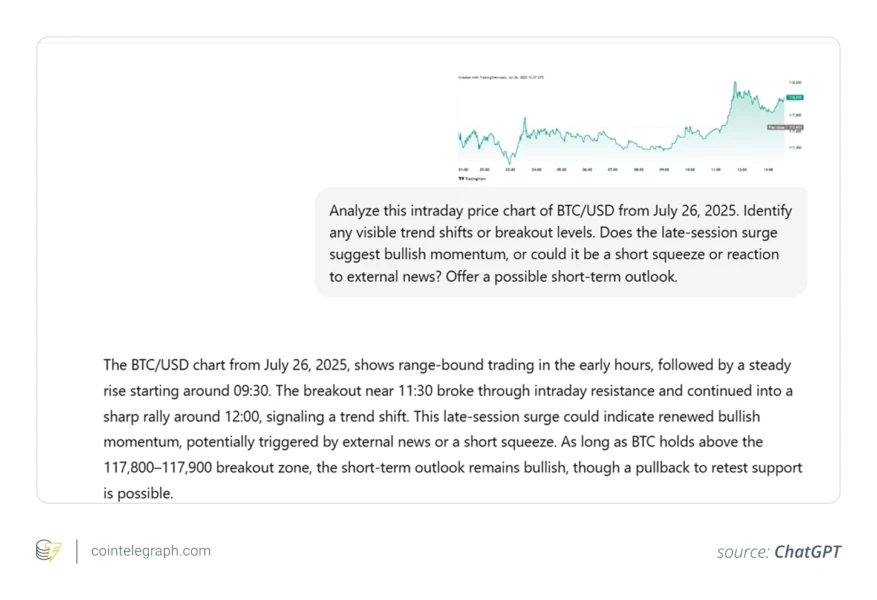
- Grok's Output: Delivered a structured, data-rich breakdown, identifying key breakout levels, potential liquidation events, and specific support/resistance zones. Its technical precision helps traders focus on actionable decision points.
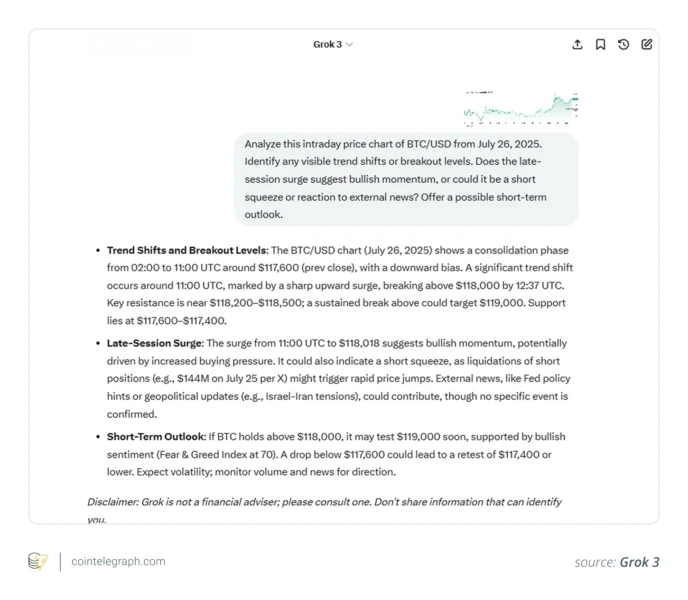
In short, ChatGPT acts like your knowledgeable analyst, while Grok is the trader friend who is always online and has their finger on the pulse of the market.
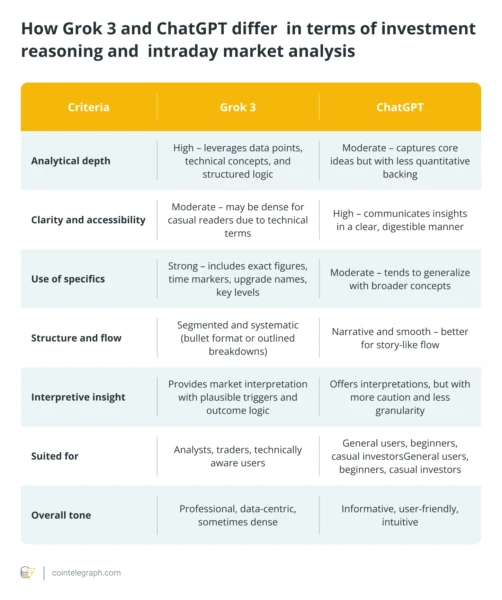
Will AI Replace Traditional Chart Analysis
Not entirely. Charts remain a fundamental tool for tactical execution, especially for active traders who depend on real-time price action and volume. However, AI is taking over the cognitive layer of trading—answering the “why” behind the market movements.
While charts show what is happening, AI models explain why by digesting news, on-chain data, and community sentiment in seconds. They excel at framing narratives and filtering signals from noise. Candlesticks aren't disappearing, but traders are increasingly turning to AI first for clarity before confirming with a chart.
A Word of Caution on Using AI for Trading
While powerful, AI models are not infallible. Their outputs are only as good as their training data and the quality of your prompts. They don't have access to live order books and can miss nuances in complex market events. Overreliance on AI without cross-verification can lead to false confidence.
Treat AI as a thinking assistant, not a trading oracle. The best results come from combining machine reasoning with human judgment. Ultimately, the smartest analysis happens when a trader and their AI work together.
Compare Plans & Pricing
Find the plan that matches your workload and unlock full access to ImaginePro.
| Plan | Price | Highlights |
|---|---|---|
| Standard | $8 / month |
|
| Premium | $20 / month |
|
Need custom terms? Talk to us to tailor credits, rate limits, or deployment options.
View All Pricing Details